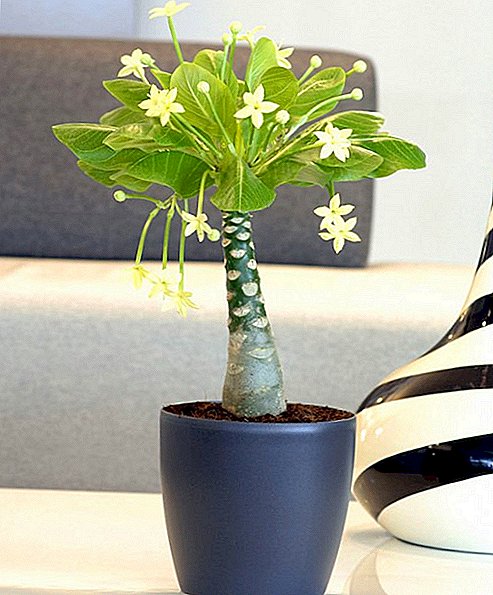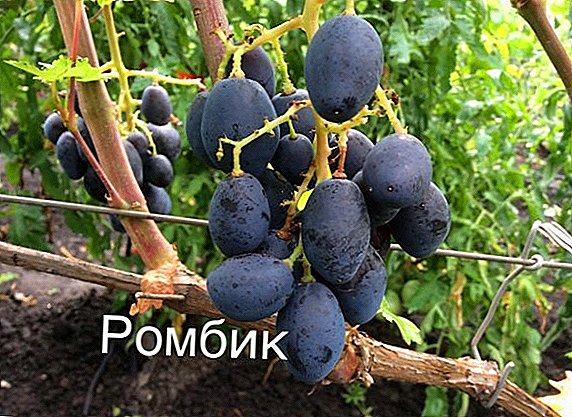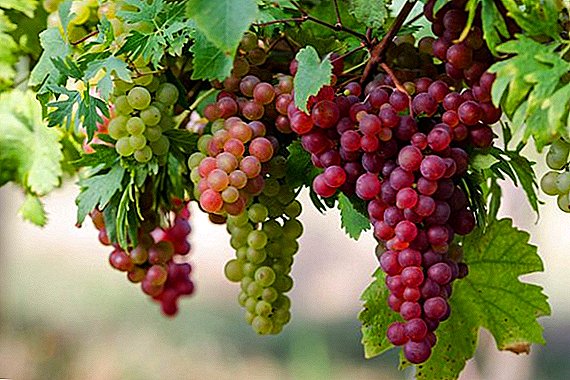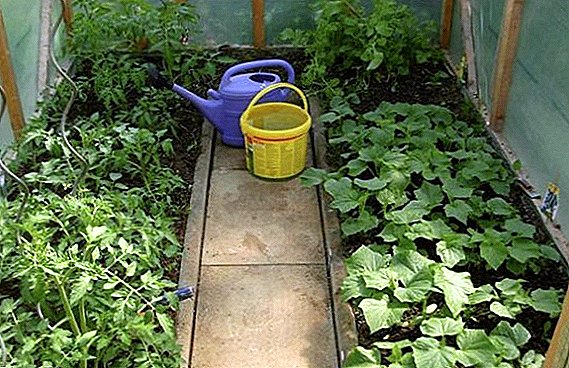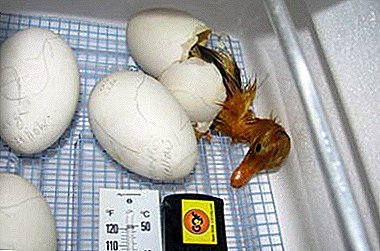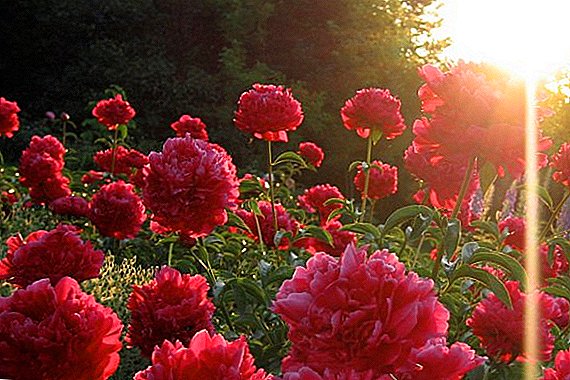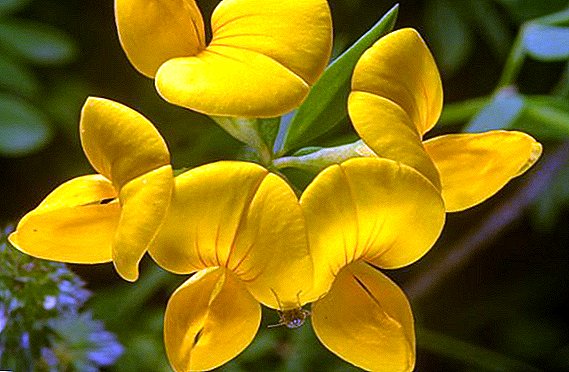 The fact that the rank of the meadow is called by the people a crane and seventeen other names indicates the indifferent attitude of a person to this grass, his interest in it and respect for its various valuable qualities. And indeed, a plant that is entirely, as they say, from chords to roots, is able to benefit people, cannot but deserve from their side increased attention.
The fact that the rank of the meadow is called by the people a crane and seventeen other names indicates the indifferent attitude of a person to this grass, his interest in it and respect for its various valuable qualities. And indeed, a plant that is entirely, as they say, from chords to roots, is able to benefit people, cannot but deserve from their side increased attention.
Description
The meadow chin belongs to the glorious legume family and is a dioecious perennial herb. This grass rises above the ground to a height of 30 to 120 centimeters. It has bright flowers of predominantly yellow color, although in some places there are plants with blue or white-blue flowers.
The cranes on the stem have a mustache with which she, in the manner of her pea relative, clings to the supports. Not very afraid of cold weather and resistant to fungal diseases.
Learn about other representatives of the legume family - chickpeas, soybeans, clover, clitoria, black beans, red, white, asparagus, peas, sweet peas, dolikhos, broom, bobster, peanuts, beans, mouse peas, acacia, certzis, vetch, lupine , alfalfa.The meadow rank is widespread throughout Europe, in most parts of Asia, it grows even in Africa and has settled well in North America, where it was imported from Europe. Most comfortably, this grass feels on the fertile soil of sparse forests, especially in birch, on their edges and slopes, as well as on steppe meadows. Very fond of light, but some shading makes without difficulty.

Did you know? The legume family, or as they are also called, moth grows almost everywhere - from the hot tropics to the Far North and with its appearance it can represent quite low grass and mighty trees 80 meters high.
Composition and use
The whole plant is literally filled with nutrients that are to some extent beneficial to human health. For example, it contains a lot of potassium and calcium. It also contains in significant quantities other micro- and macronutrients in the form of phosphorus, sulfur, magnesium and sodium. A slight content of nickel, zinc, copper, cadmium and cobalt is also noted in the rank of the meadow.
The herb is rich in vitamin C, retinol, that is, vitamin A, vitamin P, carotene, quercetin, saponins, coffee and ferulic acids, kaempferol.
Belonging to the legume family, the cranes are very rich in protein. A lot of fiber, fat and nitrogen-free substances are concentrated in its green parts. The most valuable amino acids such as serine, alanine, proline, histamine, tryptophan, lysine and leucine are hidden in the same greenery.
Histamine is also found in adam's root, cocoa, bee venom, and milk thistle.
 When ovaries form on the plant, it has the maximum concentration of flavonoids. There are other biologically active substances, such as rutin, ononin, formononetin.
When ovaries form on the plant, it has the maximum concentration of flavonoids. There are other biologically active substances, such as rutin, ononin, formononetin.Rutin enhances the body's defense against ultraviolet radiation, it is contained in the root of fragrant, golden bullock, goldenrod, pumpkin oil, marjoram, golden thrift, thrown amaranth, medunits, tansy, elder, zizyphus, hillwort, basilica.Such a powerful saturation of the plant with substances useful for the human body caused its high pharmacological qualities. The noticeable presence of flavonoids has promoted the rank of meadow to the number of antioxidant carriers that are actively used in herbal preparations that strengthen the immune system.
A pronounced ability of the ranks to deal with allergies, inflammation, viruses and harmful bacteria due to the presence of ferulic acid in it. It inhibits allergic reactions and the presence of vitamin P, which also facilitates the course of bronchial asthma.
Did you know? Until the end of the XVIII century, traditional medicine was not a separate area and it was not separated from official medicine. The treatment was largely based on the teachings of the doctors of antiquity, including Hippocrates.Glycosides, ononin and rutin, actually contribute to the fight against edema and pain. Caffeine and its acid contained in the aerial parts of the order of the tolerance affect brain activity, increasing its activity, but without affecting the increase in blood pressure.
 Long-term consumption of the fruits of the seed of the seed and the rank of the segmented, due to the presence in them of oxalyldiaminopropionic acid, is fraught with roaming, paralysis of the lower extremities.
Long-term consumption of the fruits of the seed of the seed and the rank of the segmented, due to the presence in them of oxalyldiaminopropionic acid, is fraught with roaming, paralysis of the lower extremities.The sedative properties of the plant make it possible to prepare infusions, extracts and tinctures from it to normalize the activity of the nervous system, to combat hypertension and heart neuroses. A decoction of cranes, having expectorant properties, help in the treatment of chronic bronchitis and cough of various origins. Infusion of grass seed is effective in eliminating impotence, as well as problems with the stomach, kidneys and bladder.
Blue-cyanus, lemon balm, willow-tea, whitehead, lavender, mint, devyasil, pine sap, peony, dill, onosma, northern bedtime quince, quince, and St. John's wort have a sedative effect.
Collection and storage
The optimal period for collecting the green parts of the cranes is the time from the beginning of flowering to the beginning of fruiting. It was then that the grass contains a maximum of medicinal substances. You can dry the grass and in a suspended state in small bunches.
The collected shoots and leaves are laid out in a thin layer in a place that is in the open air, but protected from the sun and rain. Store dried grass in glass containers or linen bags. 
Important! In a properly dried meadow rank, its healing qualities can last up to two years.Rhizomes of plants can be collected after the end of the growing season in October or in early spring. They should be well washed and dried in the same way as the above-ground part. Sometimes they resort to using ovens or special dryers.
And in early spring you can eat young shoots and leaves as a salad directly, so to speak, "from the garden". Seeds of the grains, husked and dried, are usually stored in tightly closed containers in a cool place for about a year.
The use of rank meadow in traditional medicine
The high saturation of the herb with useful substances predetermined its widespread use by healers in traditional medicine. 
Treatment
Calm pains in the heart, cope with insomnia and eliminate diarrhea a decoction from the root of a grass developed by folk healers, which is prepared from a glass of boiling water and two teaspoons of dried rhizome, is capable. This mixture is boiled for a quarter of an hour using a water bath, insisting for a couple of hours, filtering and drinking two tablespoons three times a day.
Infusion from the green part of the cranes folk healers are used for recovery of the respiratory organs, cough cessation and sputum stimulation. For this, a teaspoon of dried grass is drawn for two hours in 200 milliliters of boiling water, after which, in the filtered form, the infusion is taken half an hour before a meal at the rate of one tablespoon three times a day. The same infusion in the form of rinsing helps with problems with the upper respiratory tract, as well as inflammation in the mouth.
Primrose, goose fat, Icelandic moss, fennel, mulberry, cloves, white radish, ivy, knotweed, and thyme are used to combat cough.Effectively healers use the healing of inflamed wounds with a strong decoction of green leaves, previously finely ground.
Video: application of the rank of meadow
Recipes
To cook water infusion cranes for the treatment of bronchitis, should a teaspoon of dried herbs pour a glass of boiling water and let it brew for half an hour. The resulting infusion should be taken only in the form of heat no more than 15 milliliters at a time three times a day.
To correct problems in the cardiovascular system, optimize the activity of the gastrointestinal tract, combat insomnia, thrombophlebitis, strengthen the immune system and treat colds. Prepare a decoction of a tenth of a teaspoon of chopped herbs and two hundred milliliters of boiling water, which is boiled for ten minutes over low heat, and then take a large spoon every three hours.
With problems of the cardiovascular system, pay attention to black grapes, hellebore, hawthorn, daikon, Caucasian Dioscorea, zyuznik, green bananas, black cumin oil, honey water, geranium, wax moth.In case of leukocytosis, infectious hepatitis, venereal diseases, suspected oncology You can make an infusion of ten grams of crushed grass roots and a glass of boiled water, which is insisted for six hours. This remedy should be taken in a teaspoon every three hours.
Broths should be stored in the refrigerator for no more than four days, infusions - no more than a day.
The use of the rank of meadow in cooking
In the amount of protein in beans, the crane is able to compete with its close relatives beans, peas and lentils. Therefore, the Caucasian people are happy to boil and eat beans of the rank, and its green leaves and stems are added to salads and soups. And in Asia, the beans are ground and added to the flour, the nutritional value of which eventually increases substantially.
In addition, the flowers of this herb are quite good honey plants. True, bees produce not so much honey from its beautiful flowers - about 20 kilograms per hectare, but it has high taste and healing qualities.
Important! Although there are no contraindications to the use of rank, apart from individual intolerance, it is not necessary to greatly abuse the means from it in order to avoid possible problems with nerves and the spinal cord.
The use of the rank of meadow in other areas
With all its undoubted healing and nutritional properties, the crane also has a decorative meaning. Its bright and original flowers are able to decorate with themselves flower beds, flower beds and garden landscape, for which this plant is increasingly used by gardeners, flower growers and owners of estates.
But this is not all the advantages of a wonderful herb. It is a good feed for livestock, giving up to fifty centners of green mass per hectare, and at the same time enriching the soil with nitrogen. And from the ranks produce casein, which goes to the production of high quality wood glue, as well as produce first-class starch.  Such a diverse and diverse grass grows around us. It pleases the eye, fertilizes the earth, feeds humans and animals, heals the human body and does not require anything from them except to preserve their habitats in their original purity.
Such a diverse and diverse grass grows around us. It pleases the eye, fertilizes the earth, feeds humans and animals, heals the human body and does not require anything from them except to preserve their habitats in their original purity.


